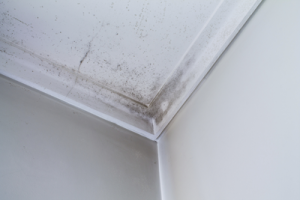 A recent study on attic ventilation found that extra airflow doesn’t guarantee less mold and fungus growing in the rafters.
A recent study on attic ventilation found that extra airflow doesn’t guarantee less mold and fungus growing in the rafters.
Really?
Commissioned by the Homeowner Protection Office of BC Housing, the study was in response to “anecdotal observations” that a significant number of wood-framed buildings on the West Coast showed mold growth on the roof sheathing of ventilated attics.
Let’s review what we know about mold. It causes health issues, including respiratory problems and allergies. It typically grows in moist places with poor ventilation. But proper attic ventilation using soffit and roof vents combined with an airtight seal at the ceiling allows excessive moisture to escape out the roof vents. It also keeps the attic and roof cool in the summer and prevents ice dams in the winter.
Surprisingly, the study found that in the buildings it tested there was mold growth even where construction and ventilation conformed to the latest building codes. There was also no evidence of excessive indoor humidity. However, not surprisingly due to the amount of rain and marine air in coastal regions, the roof sheathing would remain damp enough for mold growth for long periods.
After clear cold nights followed by sunny days the sheathing would actually get wet. But experimenting with insulation found that the addition of a thin layer above the attic reduced the wetting potential.
Also, air exchange rates would remain low during periods where there was little or no wind to help propel air through the attic ventilation. Even where ceilings were relatively airtight there was a significant amount of air leakage into the attic.
As well as field-testing, the study used computer modeling called Heat-Air-Moisture (HAM) simulation. This evaluated different levels of ceiling airtightness and levels of indoor moisture, attic ventilation, types of sheathing, and amounts of insulation.
Although it found that more ventilation or modifications to the ventilation system did not solve the problem of mold growth, it did find that insufficient ventilation would cause problems especially if the ceiling interface was not airtight.
A key learning was that a “dramatic reduction” in the amount of insulation from current levels could reduce the potential for mold growth, but there would be practically no difference going between R-30 and R-50 insulation levels. So, that’s a non-starter as insulating the top of a house is the most important place to stop heat loss in winter!
The overall finding is there’s little to be done to reduce mold growth in coastal areas other than eliminating the attic space entirely. Some modern house designs incorporate this change but then there are problems with maintaining a comfortable temperature in the summer, as the cooling effect of a ventilated attic space would be lost. And, in the winter, a no-attic built house would face potential ice dams forming.
So basically we are left with trying to stop the mold. Treating the wood sheathing with moldicides or other mold-reducing products would be the most effective method. Yet, it’s unproven how long the products currently on the market would last and whether they might cause health issues of their own.



